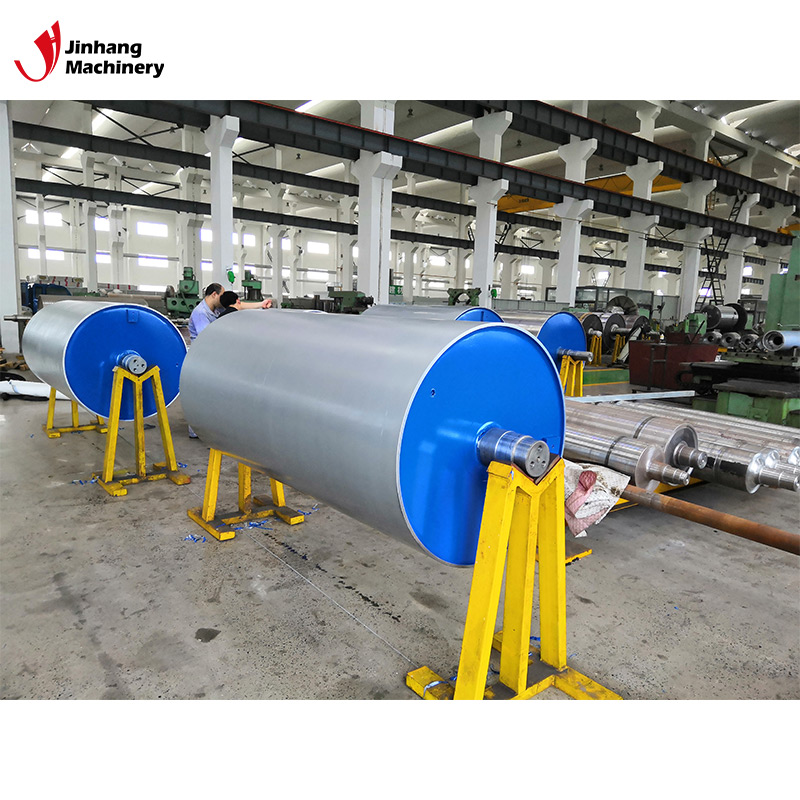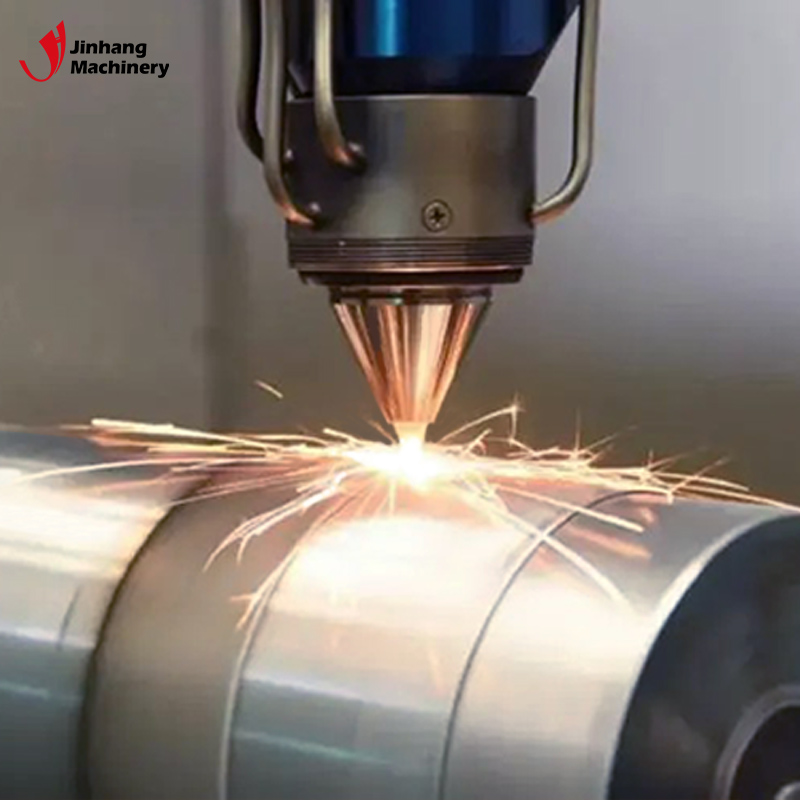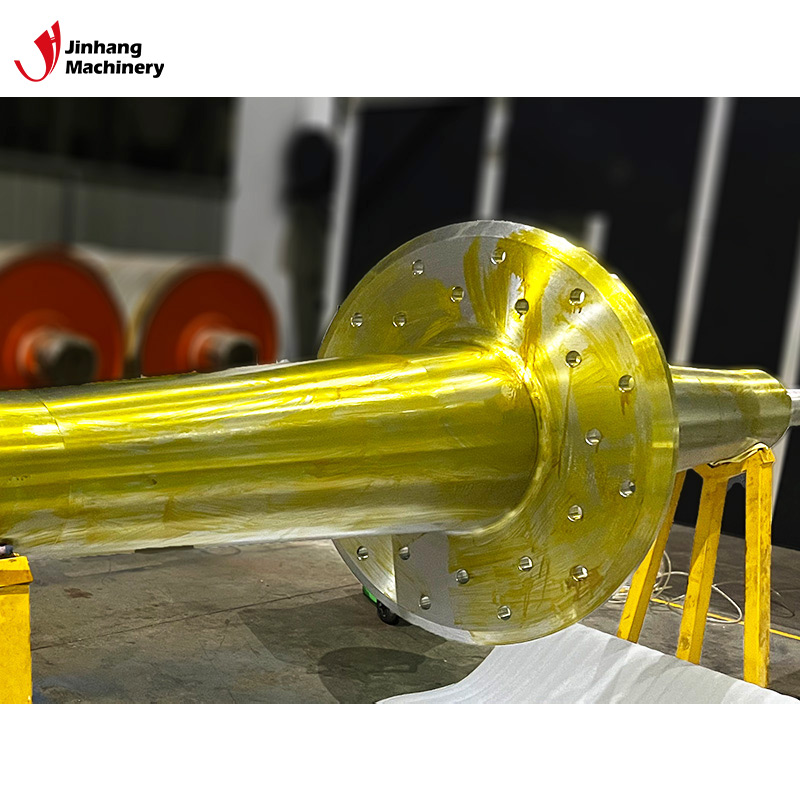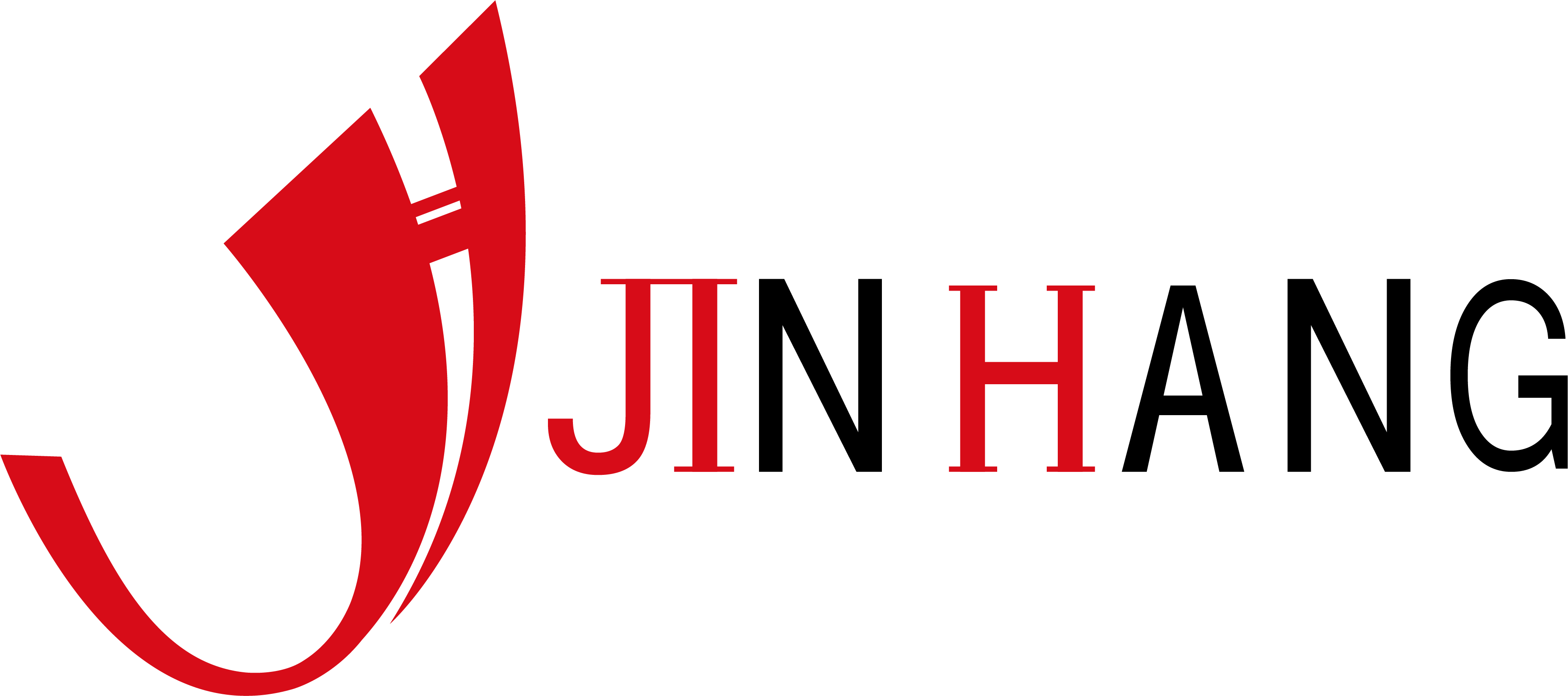Rouleau en caoutchouc éthylène-propylène - Tout ce que vous devez savoir
Il convient aux applications nécessitant une isolation électrique.En comprenant ces caractéristiques et avantages de
Rouleau en caoutchouc éthylène-propylène

, nous pouvons mieux comprendre son importance et sa large application dans l’industrie moderne. Ce composant industriel haute performance joue un rôle important dans l'amélioration de l'efficacité de la production, la garantie de la qualité des produits et la réduction des coûts de maintenance, et est devenu un élément indispensable de la production industrielle moderne.
Ethylene Propylene Rubber Roller is an industrial roller made of ethylene propylene rubber (EPDM), which is widely used in environments that require high heat resistance, ozone resistance and chemical corrosion resistance. Ethylene propylene rubber is a synthetic rubber made of ethylene and propylene copolymers, which has excellent weather resistance and elasticity. Due to its excellent properties, Ethylene Propylene Rubber Roller is widely used in the industrial field, especially in high temperature, high humidity and corrosive media.

What are the characteristics of Ethylene Propylene Rubber Roller?
The main characteristics of Ethylene Propylene Rubber Roller are: excellent heat resistance, excellent ozone resistance and weather resistance, good chemical corrosion resistance, excellent elasticity and flexibility, and excellent electrical insulation performance.
1. Excellent heat resistance:
Ethylene Propylene Rubber Roller can maintain the stability of its structure and performance in high temperature environments. Specifically, Ethylene Propylene Rubber Roller can work in superheated steam at 230°C for nearly 100 hours without changing its appearance, while other materials such as fluororubber, silicone rubber, fluorosilicone rubber, butyl rubber, nitrile rubber and natural rubber will deteriorate rapidly under the same conditions. This makes Ethylene Propylene Rubber Roller particularly suitable for high temperature operating environments such as steam processing and high temperature transmission systems.
2. Excellent ozone resistance and weather resistance:
EPR has excellent ozone resistance and weather resistance, which makes Ethylene Propylene Rubber Roller have a long service life in outdoor and harsh environments. Ozone is a strong oxidant that causes aging and cracking of many rubber materials, while EPDM is extremely resistant to ozone and can maintain its physical properties even after long exposure to ozone.
3. Good chemical corrosion resistance:
Ethylene Propylene Rubber Roller has good resistance to many chemicals, solvents and corrosive media. This makes it an ideal choice for the chemical industry and other applications involving chemical processing. Its chemical corrosion resistance not only extends the service life of the equipment, but also reduces the maintenance and replacement costs caused by chemical corrosion.
4. Excellent elasticity and flexibility:
Ethylene Propylene Rubber Roller has excellent elasticity and flexibility, and can maintain good performance even in low temperature environments. This makes it perform well in applications that require frequent contact and pressure changes, such as conveyor belt systems and squeeze roller systems.
5. Excellent electrical insulation properties:
Ethylene Propylene Rubber is a good electrical insulator, so Ethylene Propylene Rubber Roller is also widely used in applications that require electrical insulation. This is particularly important in the electronics and electrical industries, and can effectively prevent electric shock and other electrical accidents.

Ethylene Propylene Rubber Roller Manufacturing Materials and Processes
The manufacturing of Ethylene Propylene Rubber Roller usually uses high-quality EPDM as the base material, combined with advanced manufacturing processes to ensure its performance and quality. The following are some key steps in the manufacturing of Ethylene Propylene Rubber Roller:
1. Raw material selection:
High-quality EPDM is the basis for manufacturing high-performance Ethylene Propylene Rubber Roller. The selection of raw materials has a direct impact on the final performance of the roller, and the purity and accuracy of the EPDM must be ensured.
2. Mixing process:
The mixing process of EPDM needs to be carried out under specific temperature and pressure conditions to ensure the uniformity and stability of the rubber molecular structure. This step is crucial to the physical properties of the final product.
3. Mold molding:
The mixed EPDM is molded into the preliminary shape of the roller through mold molding technology. The mold molding process requires precise control of temperature and pressure to ensure the dimensional accuracy and surface quality of the roller.
4. Vulcanization:
Vulcanization is a key step in the manufacture of Ethylene Propylene Rubber Roller. Vulcanization enhances the elasticity and strength of rubber. The vulcanization process needs to be carried out under high temperature conditions to ensure that a stable cross-linking structure is formed between rubber molecules.
5. Surface treatment and testing:
After molding and vulcanization, Ethylene Propylene Rubber Roller needs to be surface treated and tested to ensure that it meets quality standards. Surface treatment includes polishing and coating, and testing includes dimensional inspection, physical property testing, and chemical property testing.

What are the application areas of Ethylene Propylene Rubber Roller?
Due to its unique properties, Ethylene Propylene Rubber Roller has been widely used in many industries. For example: papermaking industry, printing industry, textile industry, plastic processing industry, food processing industry, automobile manufacturing industry, etc.
1. Papermaking industry:
In the papermaking industry, Ethylene Propylene Rubber Roller is used for transmission and calendering in the paper production process. Its heat resistance and chemical resistance enable it to work stably for a long time in high temperature and humidity environments, ensuring the quality and production efficiency of paper.
2. Printing industry:
The printing industry requires high-precision and high-quality printing equipment. Ethylene Propylene Rubber Roller is used for ink transfer and paper transfer in printing presses. Its elasticity and wear resistance ensure the consistency of printing quality and the long life of equipment.
3. Textile industry:
In the textile industry, Ethylene Propylene Rubber Roller is used in the transmission and processing of textiles. Its good chemical resistance and elasticity enable it to perform well in the textile dyeing and finishing process, ensuring the quality and production efficiency of textiles.
4. Plastic processing industry:
In the plastic processing industry, Ethylene Propylene Rubber Roller is used for the transmission and calendering of plastic films and sheets. Its high temperature resistance and chemical resistance enable it to work stably for a long time in the plastic processing process, ensuring the quality and consistency of the product.
5. Food processing industry:
The food processing industry has strict requirements on the safety and chemical corrosion resistance of materials. Ethylene Propylene Rubber Roller is used to transport and process food materials during food production and packaging. Its excellent chemical resistance and hygiene ensure the safety and processing efficiency of food.
6. Automobile manufacturing industry:
In the automobile manufacturing industry, Ethylene Propylene Rubber Roller is used for the transmission and processing of automobile parts. Its high temperature resistance and chemical corrosion resistance enable it to work stably for a long time during the automobile manufacturing process, ensuring the quality and production efficiency of automobile parts.

Summary of the advantages of Ethylene Propylene Rubber Roller
Due to its excellent performance and wide application, Ethylene Propylene Rubber Roller has become an indispensable key component in many industries. Its main advantages include:
1. Excellent heat resistance: able to work for a long time in high temperature environment without deformation or aging.
2. Excellent ozone resistance and weather resistance: maintain stable performance in harsh environments.
3. Good chemical corrosion resistance: suitable for chemical industry and other applications involving chemical processing.
4. Excellent elasticity and flexibility: It can maintain good performance even in low temperature environments.
5. Excellent electrical insulation performance: It is suitable for applications that require electrical insulation.
By understanding these characteristics and advantages of Ethylene Propylene Rubber Roller, we can better understand its importance and wide application in modern industry. This high-performance industrial component plays an important role in improving production efficiency, ensuring product quality and reducing maintenance costs, and has become an indispensable part of modern industrial production.
5. Excellentes performances d’isolation électrique :